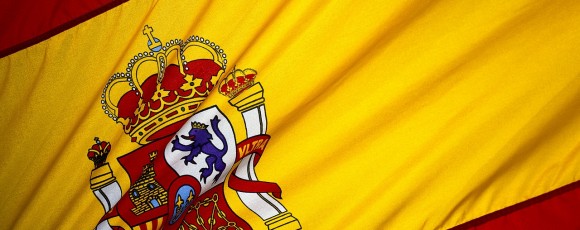How different was the Spanish flag in the 15th century from what it is today? What was the root of the difference between that flag and the modern Spanish flag? Find out what constituted the Spanish flag during that time and why.
The Spanish flag has not always been what we see it as today. The vibrant triband flag that stands as a reflection of the rich cultural heritage of Spain was at one time nonexistent. In fact the whole concept of having a national flag was nonexistent during the middle ages. Of course there were flags back then but the general idea behind a flag was not what we perceive it to be today. The Royal shield was the true symbol of nationality back then. Flags in those times were full of different imagery and symbolic representations of the principles of the ruling forces and the cavalry.
One of the most important flags in the history of the country has been the Cross of Burgundy which was established as the national symbol during the 15th century. This happened after Joanna of Castile who was the daughter of the Catholic monarchs was married off to the Archduke of Austria and later Philip I of Castile also known as Philip the Handsome in history. The symbol that was introduced during that time was definitely foreign to the Spaniards. With time however it grew to become the identity forming symbol of the Hispanic community.
The Cross of Burgundy would be embroidered on cloth of different materials. No matter which material was used for the cloth the color scheme would be restricted to white or yellow. The stripes as we see them today were not even in the picture during the 15th century. Rather the background color of the flag would either be plain white or yellow or a combination of both. Many of the European countries had white flags during those years and Spain was just another addition to the lot.
The symbol on the 15th century Spanish flag had a number of titles. The most proper of these titles was “Cruz de San Andres” which translates as Saint Andrew’s cross or the Vane of Burgundy. This symbol belonged to the Archduke. Under the reign of Emperor Charles I the cross of burgundy found itself being utilized in the different spheres of political organizations. The emperor first introduced the 15th century national flag symbol in the uniform of the Archers of Burgundy. This was usually done by means of painting. Later on it was introduced on the uniforms of the rest of the army. This served a beneficial purpose as it was easy to identify the members of the army during battles.
The Cross of Burgundy is considered to be the stepping stone of the evolution of the Spanish flag. Along with the Catholic Monarch symbol the Cross of Burgundy was among the first European symbols. The 15th century Spanish flag underwent a series of developments to end up as what it is today. It took about four centuries for the flag to finally reach its present stage. Nonetheless the 15th century flag is considered to be one of the most important flags in Spanish history.





